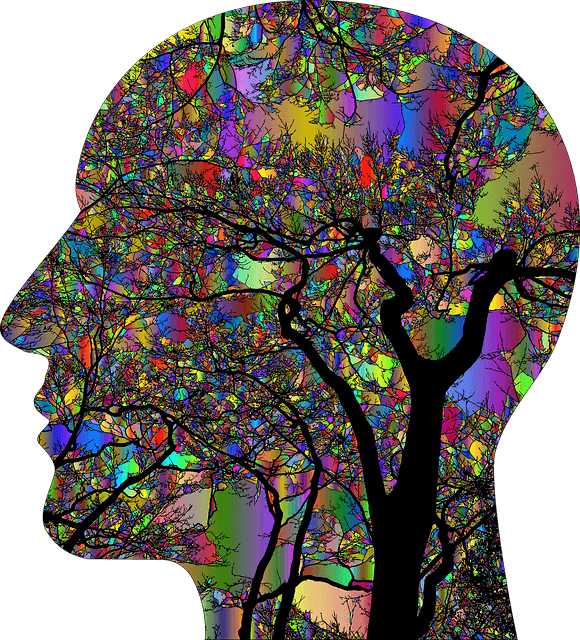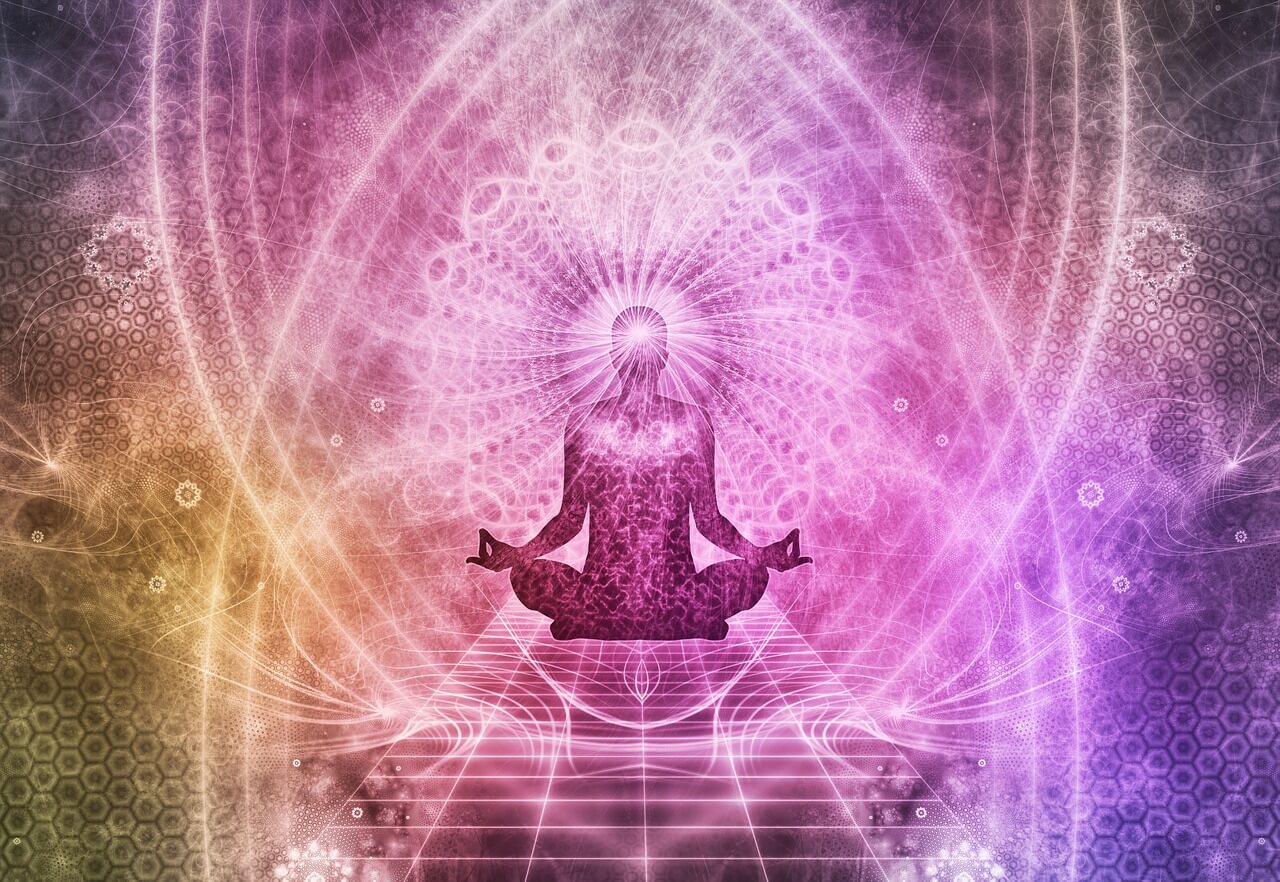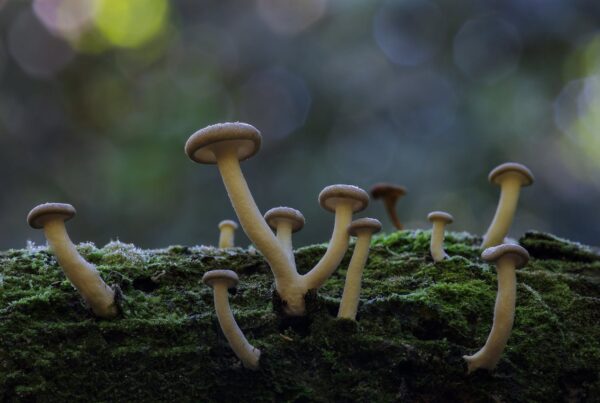Table of Contents
In the Beginning
There is strong evidence that suggests the human consumption of magic mushrooms as far back as 10,000 B.C.E. It is likely that humans have ingested psychoactive fungi ever since first branching off the evolutionary tree from our great ape ancestors.
Since psilocybin mushrooms are native and common to all continents, it is very likely that early hominids, all over the world, consumed them. As early humans expanded their terrain from forest-dwelling to savanna dwelling, they happened upon and ate psilocybin mushrooms. They became a universal part of human history, in religious ceremonies and for communicating with the gods.
Terence McKenna developed and promoted the hypothesis that psilocybin mushrooms may very well be responsible for human evolution. The “Stoned Ape Hypothesis” speculates that psychedelic mushrooms, along with cooking and fire, might have been one of the factors that caused the doubling of human brain size in a relatively short period, causing growth in technological development, and other advantages like cultural traditions, spirituality, religion, and language.
It is easy to see how all of this might occur since psilocybin can create a state of hyperactivity between brain networks that stimulate the creation of brain cells.
Psychedelics in Civilization
It is known that magic mushrooms have been used for therapeutic and spiritual purposes in tribal societies for thousands of years. They were common in cultures throughout pre-Columbian Mesoamerica, including the Mayans and the Aztecs. Ancient civilizations from the Greeks to the Vedic people of India were also including magic mushrooms in their rituals.
There were also some other highly advanced civilizations using psychedelics, like the Egyptians and the Romans. Psychoactive mushrooms are also known to have been part of the rituals and ceremonies of indigenous tribes in Siberia. Siberian shamans used the fly agaric mushroom to enter the spirit world and even developed the Father Christmas myth, possibly whilst tripping on mushrooms.
In Europe, some remaining reports surviving the middle ages describe a “madness-inducing” psychoactive mushroom. In Germany, a physician and botanist by the name of Clusius (1525-1609) discovered ‘bolond gomba’ (Narrenschwamm or Fool’s mushroom), which was used in a love potion. This mushroom shows up in documents from England, Poland, and Slovakia. Christian scribes were the first to turn this oral lore into transcriptions, but tracing the facts is difficult due to the probable censoring during the transcription process.
The Modern Era of Mushrooms
Modern awareness and usage have quietly re-entered civilization. It was Stanislav Grof in the 1950s while trying, and failing, to identify the basic symptoms and effects of magic mushrooms, concluded that hallucinogenic substances are “non-specific triggers.” Rather, an individual’s personality and situation are the factors that shape the experience.
On June 29th, 1955, the first introduction of the term “magic mushroom” in North America was made by R. Gordon Wasson, a banker, and ethnomycologist. He had travelled to Mexico and met with a medicine woman, Maria Sabina. There, he consumed “magic mushrooms” and wrote of his experience in a Life Magazine article.
In the 1960s a counterculture embraced many forms of psychedelic drugs. This was perceived as resistance to “the system” and so, actions were taken intended to stop that resistance. In 1971, psychedelic drugs were banned by the UN, Richard Nixon led the “War on Drugs” based on biased research, and the Controlled Substance Act was passed. Today the UN allows countries who have signed its treaty, to regulate psilocybin mushrooms as they see fit.
By 2020, a study completed at the University of Zurich, by a team of researchers, headed by Dr. Franz Vollenweider, found that brain function, under the influence of psilocybin, differed dramatically from schizophrenic brain function. Instead, psilocybin increased brain activity. This resulted in other prestigious institutions determining that psilocybin was useful in treating several psychological conditions.

Humans have included natural psychedelics in several cultures throughout our entire long history. Archeologists have found evidence in the Sahara Desert that magic mushrooms were used by humans for over 7000 years. Evidence shows that magic mushrooms are represented in prehistoric art across several geographic regions. It is becoming highly likely that magic mushrooms have had a big influence on our cultural development. From religious symbolism and rights-of-passage ceremonies to art, social values and everyday life, it appears that psychedelic mushrooms have had an impact on our culture and expanded our minds.
Moving into the Future with Magic Mushrooms
As we move forward, equitable access to psilocybin raises a legitimate question of fair access for all, once it is legalized. Once a substance, in this much demand, is legalized, it becomes less available for medical purposes. Look no further than the current situation in Canada, 1 in 4 medical cannabis users are less able to find cannabis, now that it has been legalized.
Magic mushrooms are currently offered online although it is still considered an illegal controlled substance. This is a consistent way to obtain your magic mushrooms, but it does come with some risk—mostly due to the lack of regulation, which would ensure consistent quality. Regulation could also mean better education and better management of consumption.
Growing naturally all over the world and now propagated more and more by enthusiasts, Magic mushrooms remain abundant and popular. Additionally, the use of psilocybin is no longer a social problem, and although hunting for local Liberty Cap mushrooms is still a pastime, the shrooms sold for recreational use are largely relegated to tropical and subtropical species, like Psilocybe cubensis.
Zoomies have a vision for the future. Our website shows it. We offer insights into the chemistry of psilocybin mushrooms and how to prepare for the experience. We offer propagation and dosage tips as well as specifics about species. The more you know, the more you can reduce the chances of a bad trip and increase the opportunity for a meaningful experience.





